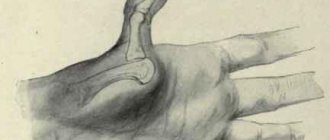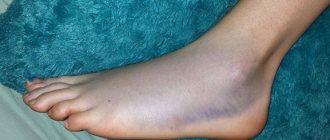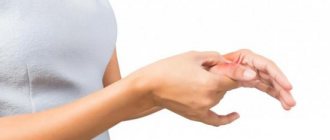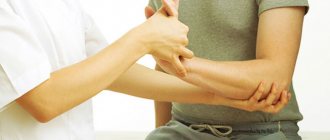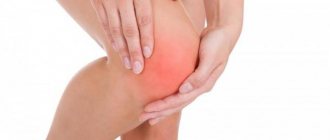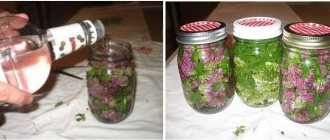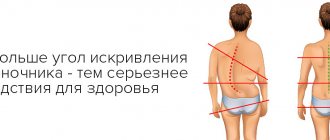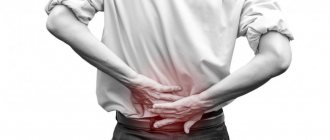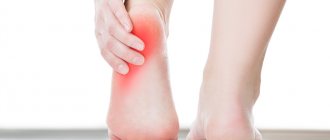Almost everyone has encountered bruises of varying severity in their lives more than once. Most victims try to cope with the trauma on their own. In reality, a bruise often becomes the cause of a serious impairment of general health. Including a bruised thumb.
Every person should know how to provide first aid for a bruise or other injury to an arm or leg.
Pathogenesis
The fingers consist of small tubular bones that are connected to each other by mobile joints. The thumbs have 2 phalanges. Other fingers have three phalanges. Around the bones there is a layer of loose fibrous connective tissue; along the palmar and dorsal sides there are tendons that come into contact with the nail and middle phalanges.
When injured, small capillaries and nerve endings are damaged. The vessels rupture, blood enters the soft tissues. Due to swelling and hemorrhages, the nerve endings are pressed. This causes severe pain. The situation is aggravated by the fact that the dermis of the fingers is dense and is little susceptible to stretching. For this reason, areas of high pressure appear in the tissues, which causes increased pain.
Bump, bruise, phalanx does not bend
A bruise can appear anywhere on the phalanx. If the phalanx does not bend or a lump appears, it means the joints are damaged.
The bruise appears during the blow. The capillaries of the circulatory system are injured, as a result of which blood penetrates into neighboring soft tissues. The damaged area of skin turns purple. The bruise disappears in 2-3 weeks.
The finger does not bend if it receives serious damage (fracture, large hematoma or dislocation). The structure or surface of the joint is often damaged, and the limb hurts greatly.
A lump is a dense and elastic tumor shaped like a ball. Arising at one point, it increases in size gradually. To remove the tumor, a consultation with a traumatologist is necessary. Sometimes you have to resort to surgery.
At a mild stage, treatment with electrophoresis, ultraviolet or paraffin applications is prescribed. You can smear with medicines that include olive oil, deer fat and wormwood.
↑
Causes
You can get a bruised finger in a variety of situations:
- When falling, the patient intuitively tries to protect himself and puts his hands in front of him. Thus, the most commonly reported injury to the upper hand is a bruised finger.
- When performing household chores. For example, it is possible to hit furniture or get your finger pinched by a door.
- During sports training, any physical activity.
- One of the most common causes of injury is wrestling.
Depending on the location of the finger on the upper limb, the risks of injury and the causes may be different:
- The thumb is most often susceptible to injury. Typically, a thumb injury occurs during a fight if the fist is clenched incorrectly.
- Injury to the index finger is less common. Usually appears due to contact with heavy furniture or other objects.
- Injuries to the middle finger occur for the same reasons as to the index finger, but are often accompanied by crushing fractures.
- A bruise on the ring finger is the least common. Damage occurs when contact with a heavy object.
- A bruised little finger on the hand is a very well-known problem. Quite often observed after battles or strenuous physical activity, when safety rules are not followed.
In case of injury of any severity, you must consult a doctor to make a diagnosis and receive a treatment regimen.
What does it look like
Clinical signs depend on the severity of the wound. You can diagnose a bruise yourself. If you suspect a dislocation, you must contact a medical facility.
A finger bruise is a closed traumatic injury to soft tissue. It is accompanied by pain. The site of injury swells, the skin becomes dark purple, dark gray or dark blue, and a hematoma (bruise) forms.
A bruise of the little finger is more common. To diagnose an injury yourself, you need to know the relevant signs of a bruise.
A weak degree is accompanied by the following symptoms:
- Mild pain;
- Presence of swelling;
- The appearance of a hematoma under the skin, under the nail.
In severe cases, other symptoms appear:
- Mild pain;
- Joint immobility;
- The movement is difficult, it seems that it differs from moving a healthy finger;
- In addition to the hematoma, severe swelling forms;
- Bleeding from open injuries;
- When palpating the damaged area, the discomfort will be stronger.
The manifestation of severe signs requires contacting the nearest trauma department of the hospital for medical assistance. If you break a finger, the symptoms are similar, so differential diagnosis is required.
↑
Take the Attention Test! Find 10 differences! (click right here!)
Risk group
Hands of the upper limbs are regularly used by people in different fields of activity. Therefore, the possibility of injury is always noted. A person can get caught on a curb and land poorly. When falling, the limbs involuntarily move forward, so the main impact falls on the hands and fingers.
It is very important to know, even in general terms, how first aid is carried out in case of injury. But there are special categories of people who are more likely to get injured. These include:
- athletes (especially those sports where hands are involved: handball, artistic gymnastics, volleyball);
- workers of industrial enterprises;
- builders;
- military personnel and law enforcement officers who interact with special equipment;
- carpenters and joiners working with tools.
Professionals in such fields must undergo first aid courses and instructions. But if the injury was sustained at home, then the help of doctors will be required.
Definition of contusion as a soft tissue injury
A bruise is an injury in which soft tissue is damaged, but the surface integument is not damaged. The name appeared as a definition of the cause of the injury. That is, it indicates the obligatory impact on the affected area with a blunt object in the form of a blow.
As a result of injury, the following may occur:
- Abrasions.
- Bruised wounds.
- Bruising.
- Tissue ruptures.
- Ruptures of internal organs.
At the site of a bruise on any part of the human body, including a finger or other limb, a bruise most often appears, which in the initial stage has a blue-purple color; as it heals, the color changes to greenish and then yellow.
Appearance of bruised fingers
Symptoms
Signs of a bruised finger on the hand depend on the severity of the injury. Several degrees of damage are determined:
- The initial degree of a finger injury due to doors is characterized by a change in the shade of the epidermis and swelling of the damaged area. Damage to the epidermis and abrasions may occur. With this problem, first aid is not required. Symptoms go away on their own after 3-5 days.
- Moderate severity is characterized by bruising. In this case, the mobility of the fingers is limited due to severe pain.
- Moderate injuries. This problem requires consultation with a doctor. The injury is characterized by severe increasing swelling, a hematoma occurs on the finger, and severe pain. Such a bruise requires great force. The problem may also be accompanied by dislocation, the separation of the nail from the nail bed.
- A severe degree of bruising a finger on a door looks more serious. Intense painful sensations appear, due to which the patient cannot bend his finger. When a finger is bruised, a puncture occurs. If the soft tissues are cut, a necrotic process is observed. If the phalanx of the finger was pressed during the injury, then the nail plate may shift. Very often, if you hit your finger on a door, there is destruction of bone tissue or dislocation of the finger. If you have such a problem, you should seek help from a doctor as soon as possible.
Consultation with a specialist is also necessary if all symptoms persist for more than 5 days.
Recovery procedure
Most bruises go away with minimal treatment on their own in a maximum of 15-20 days. The pain persists for approximately 3-5 days.
Healing of a dislocation takes a little longer and is about 21 days when a fixing bandage or bandage is applied.
Types of exercises to restore fingers
It is advisable to start a set of exercises to restore this part of the arm with a little self-massage. Sharp pain is the basis for their immediate cessation.
Exercises are performed only in the presence of dull, not very severe pain:
- Massage the painful area affected by the bruise and try to bend and straighten the joint.
- Stretch your palms in front of you, clench and unclench all your fingers.
- Place your palms in front of you and try to spread them apart and bring them together, moving them one at a time away from the rest.
- Go through small objects, beads, puzzles.
A set of exercises for recovery
First aid
Very often people wonder what to do if they bruise a finger. There is not a single person in life who has not encountered bruises of varying degrees of severity. This problem is especially encountered during warm periods.
Some patients are of the opinion that there is no need to treat bruises. But this is a wrong opinion. If help is not provided in time for a severely bruised finger, then over time the damaged area may begin to hurt more and more. Another concern is the onset of arthritis progression.
First aid for a bruised finger is:
- The first step is to cool the bruised area. You can use any product from the refrigerator or a piece of ice. But first you will need to wrap it in cloth to prevent frostbite. A piece of ice is used to massage. During the first few hours after injury, it should be performed as often as possible. As soon as the pain begins to subside a little, the finger will need to be massaged every 3-4 hours.
- To recover as quickly as possible, the finger must be at rest. For this, a regular patch is used. With its help, the finger is fixed with the neighboring finger. It is possible to apply a suspensor.
- When wondering how to relieve the pain of a bruised finger, you should use analgesic drugs in ointments or tablets. The drugs will help quickly cope with the acute inflammatory process. To combat swelling, ointments based on heparin are perfect. Immediately after injury, the use of warming ointments is strictly prohibited. They will only provoke tissue swelling and aggravate the situation. Warming applications can be done 3-4 days after injury.
- After carrying out all the necessary first aid measures, you will need to immobilize your finger. If severe pain occurs when bending it, you will need to immediately seek help from a qualified specialist. It will be important to take an x-ray to prevent a fracture.
You will need to pay attention to the nail surface in case of injury. Help should be very quick if you bruise your finger. If the nail is partially damaged, it will need to be treated with an antiseptic solution and sealed with a bactericidal plaster. This will prevent the spread of infection. After an injury, the patient will need to keep the injured area at rest.
How to distinguish from a fracture
An incorrect diagnosis and treatment procedures inappropriate for the injury lead to complications. To distinguish a bruise from a fracture, a fracture is a violation of the integrity of the bone or periosteum.
There are several signs that will help you understand what happened to your finger:
- Persistent pain that does not get better even several hours after the injury.
- The more time passes, the more pronounced the swelling and the brighter the hematoma.
- Acute pain when trying to move a joint.
- If a bone is broken or its parts are displaced, then a noticeable deformation of the finger occurs - it becomes shorter or longer.
- When you hit the area above the damage, the pain increases.
The main symptoms listed, by which a fracture can be determined, are increasing pain and swelling, dysfunction of the site of impact, and neighboring articular areas.
Diagnosis of injury
The diagnosis is made by a traumatologist. The special goal of this stage is to exclude a more severe injury - a broken finger. In comparison with dislocations there is no need, since with injury there is no inherent curvature of one phalanx relative to the other.
To determine an accurate diagnosis, the following is carried out:
- Visual inspection . There is mild swelling of the finger, and possible cyanosis and bruising. There is no clicking or abnormal mobility.
- Visualization techniques . An x-ray of the finger is usually indicated. For younger children, whose bone tissue is not fully visible on regular photographs, a CT scan of the hand is prescribed. According to the results of auxiliary examination sessions, abnormal changes in bone tissue are not noticed.
The diagnosis of tendon rupture is determined by the results of the examination. No helper methods are required. The presence of a gap is indicated by the special location of the phalanx and the impossibility of absolute maximum extension.
A hematoma appeared
The appearance of a hematoma is characterized by the following symptoms:
- There is a sharp pain;
- The damaged area turns red;
- Then it turns blue;
- The finger increases in size.
With a hematoma, the walls of the capillaries are damaged and bruising occurs into adjacent tissues. To reduce the size of the bruise and pain, you need to apply ice. Cold stops further bleeding.
It is advisable to take care of your finger the first time after an injury. During this period, you should not apply warm lotions or soak your finger in hot water.
For a large hematoma, blood clots are removed, then a tight bandage is applied.
↑
Specialized treatment
Treatment of a bruised finger on the hand is carried out without surgery. Specialists eliminate subcutaneous hematomas. For small hematomas under the nails, it is pierced with a needle. Thanks to this, the accumulated blood is released. In case of large hematomas, complete removal of the nail is sometimes required. Doctors advise the patient not to put any weight on the limb, and, if possible, keep it in a higher position.
When considering how to relieve the pain of a bruised finger, you can use Analgin, Ketorolac or another analgesic drug. The period of incapacity for work ranges from 1 to 2-3 weeks.
If there is a tendon rupture under the dermis, the patient is given a plaster suspension. When applying a special suspensor, the straight finger is fixed in a state of hyperextension. In some cases, the finger is immobilized, keeping the middle phalanx in flexion and the nail in extension. The duration of immobilization is about 4 weeks. If after 28-30 days the natural extension of the finger does not return, then intervention is indicated.
How to Determine the Extent of Injury
Based on localization, injuries are divided into 4 degrees:
- The first is minor abrasions on the skin and swelling.
- The second is an extensive hematoma, swelling, and severe pain.
- The third is a rupture of the capillary network, severe swelling of the injured organ, and limited mobility.
- The fourth is unbearable pain, tendon rupture, the palm looks swollen, traumatic shock. Possible fracture.
A bruise or fracture can only be determined by a traumatologist after an X-ray examination.
↑
Ointments and creams for bruised fingers
Many people wonder what to do if they bruise a finger joint on their hand. For this problem, the use of ointments and creams is widespread. The pain and swelling that occurs with bruises are a consequence of damage to the capillaries, oxygen starvation of the tissues, and increased capillary permeability. In this case, blood microcirculation deteriorates.
The use of creams and ointments for a bruised finger is aimed at:
- combating pain;
- reduction of tissue irritation;
- elimination of the acute inflammatory process;
- stimulation of tissue regeneration.
Many ointments are characterized by antiphlogistic and analgesic effects. Such products are usually divided into warming and cooling.
Warming ointments
Home treatment for a bruised finger involves the use of warming medications. Warming agents, due to the substances included in the composition, limitedly increase blood circulation in the tissue and increase heat transfer. It is prohibited to use such creams immediately after an injury. Immediately after injury, the affected area must be cooled. Warming agents are indicated for use during the rehabilitation period.
Warming drugs are used for prevention. Doctors recommend massages using such products. But due to the subtleties of using medications, allergic reactions may occur.
Cooling ointments
If we talk about what to do if a finger is bruised, then it is undoubtedly necessary to use cooling ointments. Gels are non-irritating, so they can be used immediately after an injury. The drugs create a cooling sensation. Cooling ointments, due to analgesic components, anticoagulants, essential oils, menthol, and sometimes alcohol, anesthetize the site of injury and soothe the damaged area.
For fresh injuries, do not rub the ointment in, so as not to provoke a rise in temperature. You just need to apply the composition to the sore area and wait until it is absorbed. For such purposes, preparations in the form of gels are best suited, as they have good absorption ability.
The best ointments and creams
If you are wondering what to do if you bruise your finger, then be sure to use gels, ointments and creams. When you go to a pharmacy, you can see hundreds of different drugs that are used for bruises, bruises, and severe pain. They differ from each other in action, composition, manufacturer and cost. It is important to understand that not only expensive drugs, but also cheaper analogues can be effective.
The most effective means:
- Heparin-Acrigel 1000 . The ointment is characterized by an antiphlogistic effect. Promptly fights acute inflammatory processes. It will help relieve swelling from a bruised finger.
- Arnigel ointment . This drug quickly eliminates pain, eliminates bruises and hematomas.
- Bruise-Off . When considering what to do if your finger is hurt by a door, you should choose this drug. This is an affordable remedy for bruises and bruises. The ointment quickly combats pain, swelling and swelling.
- Troxevasin . When considering what to do if you bruise your little finger, choose this drug. The drug is characterized by antiphlogistic and analgesic effects. The ointment ensures rapid resorption. The ointment is used for severe pain, swelling, and bruises. The composition is applied to the affected area and fixed with a suspensor.
- Ketoprofen . The ointment quickly combats acute inflammatory processes and combats pain. It is also characterized by antiphlogistic and analgesic effects.
- Indomethacin . This ointment relieves pain, fights the acute inflammatory process and helps eliminate swelling and redness in the sore area.
- Heparoid Zentiva . The product is actively used for acute inflammatory processes and swelling. The product quickly copes with pain and promotes the resorption of bruises.
- Badyaga Forte . This is a highly effective and affordable product. The gel helps in resolving bruises. With its help, swelling and pain go away.
- Nicoflex . This is a cream that is actively prescribed by doctors for bruised fingers. A small amount is applied to the affected area and massaged. Promotes the resorption of bruises and the passage of swelling.
- Alflutop . This ointment helps fight pain and acute inflammatory processes.
- Rescuer . When considering what to do if the little finger on your hand is bruised, then use the Rescuer. This is a well-known and accessible remedy that helps to quickly eliminate pain and swelling at the site of a bruise. The drug is also used to eliminate hematomas and acute inflammatory processes.
- Ichthyol . A safe ointment that is indicated for bruises to combat pain and inflammation. A distinctive point is the fact that the ointment can be used even on damaged skin. The product has an antibacterial effect.
- Traumeel . If a severe bruise of a finger occurs, then a homeopathic cooling mass comes to the rescue. It contains extracts of 11 herbs. The drug fights the acute inflammatory process and is characterized by analgesic and absorbable effects. Apply the product 2-3 times a day.
- Zinc ointment . This is a drug that has wound healing and antiphlogistic effects. Can be used in the presence of wounds and abrasions. Apply 2-3 times a day until the consequences of the bruise are completely eliminated.
Since some medications have contraindications for use, you should consult a specialist before using any medication.
The use of ointments in the treatment of children
Many mothers wonder what to do if their child’s thumb is bruised. Children are quite hyperactive and often fall. Therefore, bruised fingers are a common problem. In childhood, injuries do not bind the child to bed, but despite the activity, within 2-4 days after the injury, parents will need to treat the injury site.
Plantain and arnica are related to traditional medicine, but doctors recommend their active use. But there is one point - to give preference to ready-made factory creams. When considering what to apply to a bruised finger, parents should pay attention to the “Children’s” cream for bruises and abrasions.
The healing properties are due to its composition:
- Arnica flowers are characterized by antiphlogistic action;
- keratin protects against infection of the epidermis through scratches;
- plantain promotes rapid healing of wounds;
- Peppermint essential oil cools the dermis and relieves pain;
- Calendula flowers inhibit the development of the acute inflammatory process.
Bruises in children do not pose a health hazard. But to speed up the healing process you will need to use creams.
Fractured toe: types
A toe fracture can be an open fracture, where soft tissue damage occurs and bone fragments may protrude from the wound. In this situation, there is a direct threat of secondary infection. The patient urgently needs antiseptic treatment. For open fractures of the toes, treatment should not be delayed.
With closed fractures of the fingers, the integrity of the skin is not broken, and displacement of the fragments is usually not observed. But this type of fracture does not exclude the development of infectious and other complications. A closed fracture of the toe is often complicated by a purulent infection, especially when the nail bed is damaged and the nail plate peels off, which becomes an entry point for infectious pathogens.
When a displaced fracture occurs, comparison of bone fragments is required, which will give the finger an anatomically correct shape and restore the impaired functions of the limb.
Traditional medicine
When wondering what to do if you have a severely bruised finger, you should pay attention to traditional medicine. In case of serious injury, of course, it is important to go to the clinic as soon as possible. After examining the patient and making a diagnosis, the doctor will draw up a competent treatment regimen. But in most cases, household injuries do not require specific treatment. Doctors recommend using folk remedies when treating finger bruises at home.
The most effective are:
- Applications with potatoes . The potatoes are boiled with the skins on and then mashed. Spread the resulting pulp on a bandage and apply a compress to the sore area. It is also possible to add honey or soda to the pulp. This application will help get rid of the hematoma as soon as possible.
- Oil, honey and vinegar . Mix all ingredients in equal proportions. Soak a gauze bandage with the resulting liquid mixture, apply to the damaged area and secure with a bandage.
- Onion . It must be grated on a fine grater to make a paste. Or use a blender, which will reduce the preparation time. Dip gauze in the paste and apply to the damaged area. Change compresses twice a day.
- Bodyaga powder . It will need to be diluted to the state of sour cream. Apply applications twice a day and secure with a bandage.
- Milk . Treatment for bruised fingers at home also includes a recipe using regular cow's milk. During treatment, applications are made. It is enough to heat the milk, moisten a piece of cloth in it and apply it to the painful area. Wrap the top with cellophane and a warm scarf. Such compresses will need to be done throughout the day. Change the dressing as it cools.
- Vinegar essence . When considering how to treat a bruised finger on your hand, pay attention to vinegar essence. You will need to dissolve two small spoons in a liter of water. Moisten a soft cloth in the resulting solution and apply to the damaged area. When using this method of treatment, the bruise will go away after a maximum of 2-3 days.
- White cabbage . When considering what to do if your finger turns blue from a bruise, you should use regular cabbage. Applying a fresh leaf will eliminate swelling, severe pain, bruising and hematoma. Doctors recommend grinding the cabbage leaf into a pulp, putting it on a bandage, applying it to the sore finger and securing it with a bandage.
- Aloe leaves . Aloe is a very common indoor plant that can be found in almost every home. The plant is characterized by healing properties and helps fight many pathologies. Cut a leaf from the plant, spread it with honey and apply it to the sore finger.
- Wormwood . The herb wormwood is an excellent way to treat injuries. Grind the herb to a pulp, spread a thick layer on the affected area and apply a suspension. Do not allow the bandage to dry completely. Change as often as possible, soaking the plant in the juice.
- Salt baths . When considering how to treat a severe bruise of a finger, be sure to pay attention to salt baths. Add a solution of bitter Epsom salts to a hot water bath. Such procedures are carried out 2-3 times a week for an hour. Such baths will help get rid of bruises after an injury in a very short period of time.
- Mountain arnica herb . If a girl hurts her finger, it swells and turns blue, then arnica herb is an excellent remedy. Pre-grind 100 g of herb and pour in a liter of vodka. Let the resulting product brew for 5 days. After this time, use the tincture to make lotions. With the help of a prescription, the pain disappears in a short time, the bleeding stops and the swelling goes away.
- Infusion of cinquefoil . Pre-grind the cinquefoil, take 1 large spoon of the herb and pour a cup of boiling water. Leave the mixture to sit for 2 hours, then filter and cool. The infusion is taken orally in small sips. Place the thickener on gauze and apply to the damaged area.
All traditional medicine is absolutely safe for health and therefore does not require consultation with a doctor.
Grandmother's rub for bruised fingers
Paying attention to the question of how to treat a bruised finger on your hand, you should definitely prepare a homemade highly effective rub. To prepare the healing remedy, you will need 200 grams of beeswax, 200 ml of medical alcohol, a bottle of iodine, 30 ml of camphor alcohol, bodyaga, a teaspoon of mustard powder, three cloves of garlic, and a little cinnamon powder.
The first step is to prepare a decoction of bodyaga. To obtain the composition, take 2 large spoons of the dried plant, pour 0.5 liters of boiling water and close the lid well. Pour alcohol into a separate pan and heat it. Add iodine and camphor alcohol to the heated alcohol. Once the liquid is oily and smooth, add beeswax and bring to a boil. Boil the mixture for 10 minutes. Stir the mixture regularly, add mustard powder, cinnamon and grated garlic. As soon as the liquid has cooled, add the decoction to it. Mix the whole mixture thoroughly, pour into a glass container and place in the refrigerator.
Use the cream chilled. The ointment must be stored in the refrigerator at a temperature of no more than 6 degrees. The resulting product is very easy to use. When considering what to put on your finger when it’s bruised, this cream will be a lifesaver. Using two fingers, scoop up a sufficient amount of ointment and apply to the bruised surface. After just 5 minutes you can feel that the pain is going away, and after 3 hours the redness and bruising disappear.
First aid: what to do at home
If the blow was not too strong, and the symptoms pass quickly, then it is not necessary to contact a doctor, but anyone needs to know how to provide help:
- Immediately remove the rings, if any;
- Quickly apply cold to the damaged area to constrict the blood vessels. If there is no ice, then you can use any packaging from the freezer. As a last resort, you can simply place the place under cold water from the tap. It is not recommended to keep the cold for a long time, it can have a bad effect on the skin. The optimal time is about 15 minutes, but no more than 30. Exposure to cold prevents swelling from progressing, relieves pain, and is an excellent remedy for relieving pain from bruises and blows.
Apply cold
- It is not advisable for diabetics to apply cold, as this may have a bad effect on their sugar levels;
- If there is damage to the skin or nail, then pathogenic microbes are likely to penetrate through the wounds, so it is better to treat the damaged area with iodine or hydrogen peroxide; you do not need to treat the entire finger, this may interfere with examination by a doctor;
- To reduce swelling, it is a good idea to apply iodine mesh to the injured arm;
- It is best not to move the injured finger unless necessary, give it rest, and do not make unnecessary movements. If there is a joint bruise, it is better to keep it in an elevated position, you can put pillows under it;
- Pain should not be tolerated; if you numb the injury in time, recovery is easier and faster. To eliminate pain, you can take painkillers: ibuprofen, analgin, aspirin, ketorolac, paracetamol or any other remedy against pain and inflammation. It is possible to apply compresses from a dimexide solution;
- If a lot of blood has accumulated under the nail and a large hematoma has formed, then you need to consult a doctor, who will use a puncture to release the collected blood. Sometimes the nail needs to be removed;
- The finger can be bandaged, but the bandage should not be tight;
- It is forbidden to use heat within 24 hours after an injury.
It is best to seek medical help. If a tendon is torn or fractured, it will be necessary to fix the damaged area with a rigid bandage or a plaster splint.
Basic methods of finger rehabilitation
Treatment of a finger after an injury does not last long, but it is important to approach rehabilitation correctly. High-quality rehabilitation does not take too much time. In the case of ordinary bruises, it is enough to ensure effective disinfection and use honey. drugs that relieve swelling and pain.
Basic methods of rehabilitation after a bruised thumb:
- Massage . Highly qualified manual intervention will normalize blood supply and stimulate regeneration processes.
- Physiotherapy . This is a complex of passive methods of finger rehabilitation - magnetic therapy (promotes calcium metabolism), ultrasound therapy, electrophoresis, due to which the pain syndrome goes away.
- Physical therapy exercises . A couple of days after the injury, you must immediately begin training the joints that were immobilized. A set of gymnastic exercises is prescribed only by a specialist, taking into account personal indications.
With a properly designed scheme, recovery occurs very quickly.
A set of exercises for fingers
When considering what to do if your finger is severely bruised, or what to do if your little finger is bruised, pay attention to a set of finger exercises that you can do yourself at home.
Let's look at a few effective exercises:
- Fist . Straighten and extend your fingers. The person will feel tension in the joints and muscles. There should be no discomfort. You should start with simple stretching. Gather your fingers into a fist, placing your thumb on the rest. Keep your hand in this position for a minute. Afterwards, unclench your fist and straighten your fingers, spreading them out to the maximum. The session should be carried out at least 4 times.
- Finger stretching . This type of exercise helps eliminate pain and increase joint mobility. Place your hand on a horizontal surface, palm down. Gently straighten your fingers, placing them on a flat surface. The joints should not be tense. Keep your hand in this position for half a minute, and then relax and return them to the starting position. The session should be performed at least 4 times.
- Claws . This type develops mobility. Place your hand with your palm facing you. Bend your fingers so that your fingertips rest on the base of the joints. The limb should look like a cat's paw. The limb should remain in this state for 30 seconds, and the training should be repeated 4 times.
- Grip . Take a not very elastic ball and squeeze it as hard as you can. Hold for a couple of seconds and then release. Repeat the steps 10-15 times. Dedicate time to the complex 2-3 times a week. It should not be done if there was a bruise of the thumb with damage to the joints.
- Pinching . This exercise helps develop muscle tissue. You will need to pinch the soft ball by squeezing it between your thumb and one of the other fingers of your hand. Hold for 45 seconds. Repeat the training 10-15 times. Sessions should be 2-3 times a week. Also, you should not resort to a session if the joints of the thumb are affected.
- Raising a finger . Place your hand palm down on a horizontal surface. Raise your fingers one by one and place them back on the surface. It is possible to control all fingers at once. Repeat the training 10-12 times.
- Protrusion of the thumb . When treating a bruised thumb, it is very important to devote time to such activities. Place the limb with your palm down on a horizontal surface. Using an elastic band, tighten your palm together with your thumb. Move your thumb to the side, overcoming the resistance of the elastic band. Perform such actions 4 times a week.
- Thumb bend . If the question arises, what to do if you bruise your finger? You should place your hand in front of you, palm down, and move your thumb to the side. Bend your thumb toward your palm so that it touches the base of your little finger. Hold your finger for a minute, then relax. Charge 4 times.
Such sessions, carried out at home, will help quickly relieve pain, inflammation and swelling, and will also quickly develop your fingers.
How to choose an elastic bandage for bandaging your thumb
Medical elastic bandage "Intex" is a woven tensile tape made of latex, cotton and polyester fiber. To bandage the hand and wrist, it is convenient to use an elastic bandage 1-1.5 m long and 8 cm wide.
If you need to fix the finger immediately after reversing the dislocation , use a low-stretch Intex compression bandage that can stretch 50% of its length at rest.
If you need to reduce swelling and hematoma after removing a splint or plaster , use a high-tensile Intex compression bandage that can stretch 150% of its length at rest.
Complications
It is very important to properly treat the injury and know what to do if you bruise your finger, otherwise complications can arise. Mild to moderate injuries respond quickly to treatment. If all the doctor’s instructions are followed, absolute recovery occurs within a week, and stabilization of all finger functions is noted within a month.
In severe cases, recovery time takes slightly longer. In the absence of quality care and failure to follow the instructions of a specialist, the risk of the following complications increases:
- limited finger mobility;
- impaired sensitivity of the fingers;
- the appearance of cyanosis under the nail plate;
- entry of an infectious pathogen;
- hematoma calcification.
Therefore, if signs of a bruise, severe pain or hematoma appear, you should consult a doctor.
Effective painkillers
For severe pain, you can use different painkillers.
More often, ointments are used that do not have a warming or cooling effect. The doctor prescribes a drug that relieves pain and does not worsen the condition of the wound. For serious injuries, pills or injections may be prescribed.
Paracetamol is often taken, which affects nerve impulses, reducing pain. If inflammatory processes occur, you can take ibuprofen. Ketanov is rarely used when it is necessary to anesthetize a lesion for a long time.
In severe cases, injections are prescribed. Declofinac injections help relieve inflammation.
You can reduce pain using folk remedies:
- Powder of crushed plantain leaves;
- Calendula infusion;
- Cabbage leaves;
- Bodyagi;
- Grated potatoes.
↑
Prevention
In order not to wonder what to do if a finger is severely bruised, it is necessary to simply adhere to preventive measures. But still, no one is immune from injury. There are no specific actions that will help protect yourself. It is necessary to adhere to safety precautions when engaging in physical activity and at work, and do not forget about the use of personal protective equipment.
It will be possible to avoid undesirable consequences if you stop drinking alcoholic beverages, smoking, and adhere to a balanced, healthy diet. A healthy body can resist shock much better. Timely consultation with a doctor will also help reduce the likelihood of complications.
Trauma in a child and an adult - the difference
Bruises occur more often in children. Children get their hands pinched in doors, fall and hit hard objects.
If a child hits his finger, he must be calmed down and given first aid. The baby can be breastfed. For a slight bruise, apply a cold object and hold for about 15 minutes. Then treat with an antiseptic.
If the crying does not stop, there are clear signs of severe damage, then you need to take the baby to the doctor. To protect your child from injury, you should not leave him unattended for a long time.
A baby's delicate skin makes him more vulnerable to damage compared to adults. A bruise can also appear from a minor blow or fall.
The cells of a child’s body renew themselves much faster. The healing process of a bruised finger in a child is faster than in adults.
↑
